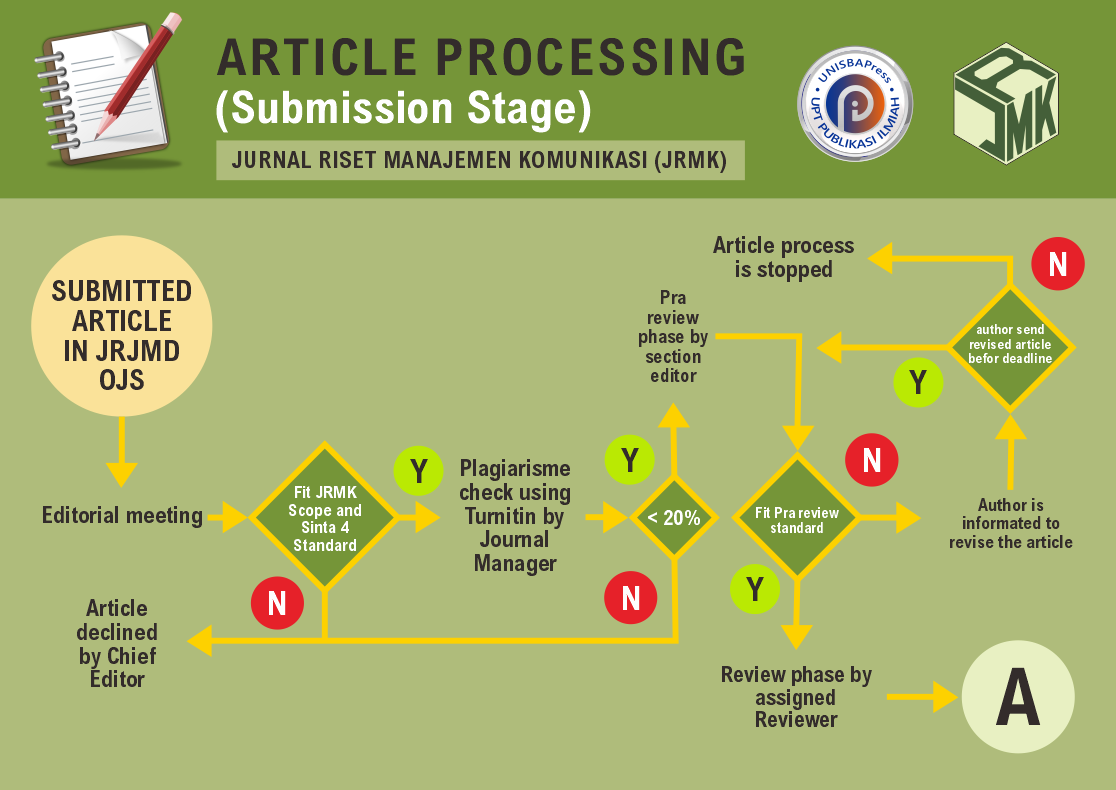Praktik Virtualisasi Ruang Kelas di Masa Pandemi: Penyeragaman, Banking System Freirean dan Literasi
DOI:
https://doi.org/10.29313/jrmk.v3i1.2314Keywords:
Covid-19, Literasi Digital, Literasi InformasiAbstract
Abstract. The Covid-19 pandemic requires schools to adapt health protocols procedures and the logic of pandemic conditions, at all costs. Schools in Indonesia conduct distance learning or e-learning, one of which is in the form of the virtual classroom. It has the potential to improve digital and information literacy among teachers and students, furthermore it could turn the “banking system” learning style to become a more “problem-posing” strategy. However, it seems that virtual classes only use the internet as a support system, not as a learning ecosystem. This paper aims to look at the online learning process carried out by teachers and students in virtual classrooms, through qualitative research with several high school teachers selected by purposive sampling as research subjects. As a result, most informants revealed that virtual classes still referred to offline conventional classrooms with their obstacles such as uniformity, banking system, lack of information literacy, and the internet had not become a learning ecosystem yet.
Abstrak. Pandemi Covid-19 mewajibkan sekolah menyesuaikan diri pada protokol kesehatan dan logika pandemi, dengan segala risikonya. Sekolah-sekolah di Indonesia melakukan pembelajaran jarak jauh (PJJ) atau e-learning, salah satunya berupa kelas virtual. Hal ini berpotensi meningkatkan literasi digital dan literasi informasi guru maupun murid lebih dari sekadar digitalisasi sumber belajar, bahkan berpotensi memperbaiki gaya belajar banking system menjadi lebih problem posing strategy. Akan tetapi, tampaknya kelas virtual tersebut hanya memanfaatkan internet sebagai sistem pendukung, bukan sebagai ekosistem belajar. Tulisan ini bertujuan untuk melihat proses pembelajaran online yang dilakukan guru dan murid di kelas virtual, melalui penelitian kualitatif dengan subjek beberapa guru sekolah menengah yang dipilih secara purposeful sampling. Hasilnya, sebagian besar informan mengungkapkan bahwa kelas virtual masih mengacu pada kelas konvensional luring dengan berbagai tantangan seperti penyeragaman, banking system, kurangnya literasi informasi, dan internet belum menjadi ekosistem belajar.
References
Aparicio, M., Bacao, F., & Oliveira, T. (2016). An a-Learning Theoretical Framework. Educational Technology & Society, 19(1), 292–307.
Bagur-Femenías, L., Buil-Fabrega, M., & Aznar, J. P. (2020). Teaching digital natives to acquire competences for sustainable development. International Journal of Sustainability in Higher Education, 21(6), 1053–1069. https://doi.org/10.1108/IJSHE-09-2019-0284
Brown, C., & Sekimoto, S. (2017). Engaging Critical Pedagogy in the Classroom: A Student-Centered Approach to Advertising Education. Journal of Advertising Education, 21(2), 18–24. https://doi.org/10.1177/109804821702100207
Darmody, M., Smyth, E., & Russell, H. (2021). Impacts of the COVID-19 Control Measures on Widening Educational Inequalities. YOUNG, 29(4), 366–380. https://doi.org/10.1177/11033088211027412
Fofano, D. K., & Rech, H. L. (2021). Ideology and Education from the Perspective of Louis Althusser. Educacao em Revista, 37(e232216), 1–18. https://doi.org/10.1590/0102-4698232216
Freire, P. (2008). Pendidikan Kaum Tertindas (Tim Redaksi LP3ES (penerj.)). Pustaka LP3ES.
Guntarto, B. (2011). Perkembangan Program Literasi Media di Indonesia. Konferensi Nasional Literasi Media, 50.
Hendriyani, & Guntarto, B. (2012). Memetakan Literasi Media di Indonesia. In D. Herlina (Ed.), Gerakan Literasi Media Indonesia. Rumah Sinema.
Hidayat, F. P. (2021). Media Literacy Education for Students During Learning Online the Covid-19 Pandemic. Edunesia: Jurnal Ilmiah Pendidikan, 2(3), 628–634. https://doi.org/10.51276/edu.v2i3.182
Holstein, J. A. (2018). Advancing a Constructionist Analytic. In N. K. Denzin & Y. S. Lincoln (Ed.), The Sage Handbook of Qualitative Research (5th ed., h. 692–719). SAGE Publications, Inc.
Kemdikbud RI. (2020). Penyesuaian Kebijakan Pembelajaran di Masa Pandemi COVID-19. https://bersamahadapikorona.kemdikbud.go.id/wp-content/uploads/2020/08/20200807-Pembelajaran-di-Masa-Covid-19-2-1.pdf
Maboloc, C. R. B. (2020). Critical Pedagogy in the New Normal. VOICES IN BIOETHICS, 6. https://doi.org/10.7916/vib.v6i.6888
Miles, M. B., Huberman, A. M., & Saldana, J. (2014). Qualitative Data Analysis: A Methods Sourcebook (3rd ed.). SAGE Publications, Inc.
Neuman, W. L. (2014). Social Research Methods: Qualitative and Quantitative Approaches (7th ed.). Pearson Education, Ltd.
Office of Civil Rights. (2021). Education in a Pandemic: The disparate impacts of Covid-19 on America’s students.
Ollis, T. (2014). Activism, Reflection, and Paulo Freire--an Embodied Pedagogy. In M. A. Peters & T. Besley (Ed.), Paulo Freire: The Global Legacy (h. 517–527). Peter Lang AG.
Perdew, L. (2017). Information Literacy in the Digital Age. Abdo Publishing.
Pier, L., Hough, H. J., Christian, M., Bookman, N., Wilkenfeld, B., & Miller, R. (2021). COVID-19 and the educational equity crisis: Evidence of learning loss from the CORE Data Collaborative. https://edpolicyinca.org/newsroom/covid-19-and-educational-equity-crisis
Sholle, D., & Denski, S. (1997). Media Education and the (Re)Production of Culture.
Shrier, D. L. (2021). From Shock to Awe: How The Pandemic Crisis Has Opened Up the Dialogue For A True Reinvention of Education. Horizons, Summer(19), 64–73.
Siahaan, M. (2020). Dampak Pandemi Covid-19 Terhadap Dunia Pendidikan. Jurnal Kajian Ilmiah, 1(1), 73–80. https://doi.org/10.31599/jki.v1i1.265
Spanos, W. V. (2015). Posthumanism in the age of globalization: Rethinking the end of education. symploke, 23(1–2), 15–39. http://www.jstor.org/stable/10.5250/symploke.23.1-2.0015
Szűts, Z. (2019). A Critical Approach to Digital Pedagogy - A Holistic Methodology in the Information Society. Opus et Educatio, 6(4). https://doi.org/10.3311/ope.342
Taylor, S. J., Bogdan, R., & DeVault, M. L. (2016). Introduction to Qualitative Research Methods: A Guide Book and Resource (4th ed.). John Willey & Sons, Inc.
Vallera, F. L., & Sadat, B. (2020). Using Design Thinking Practices to Create Technology-Driven Adult Professional Development Programs. In J. Keengwe & G. Onchwari (Ed.), Handbook of Research on Literacy and Digital Technology Integration in Teacher Education (h. 78–92). IGI Global. https://doi.org/10.4018/978-1-7998-1461-0.ch004
Wadsworth, Y. (2011). Do It Yourself Social Research (3rd ed.). Left Coast Press, Inc.
White, M. A. (1983). Synthesis of research on electronic learning. Educational Leadership, 40(8), 13–15.














